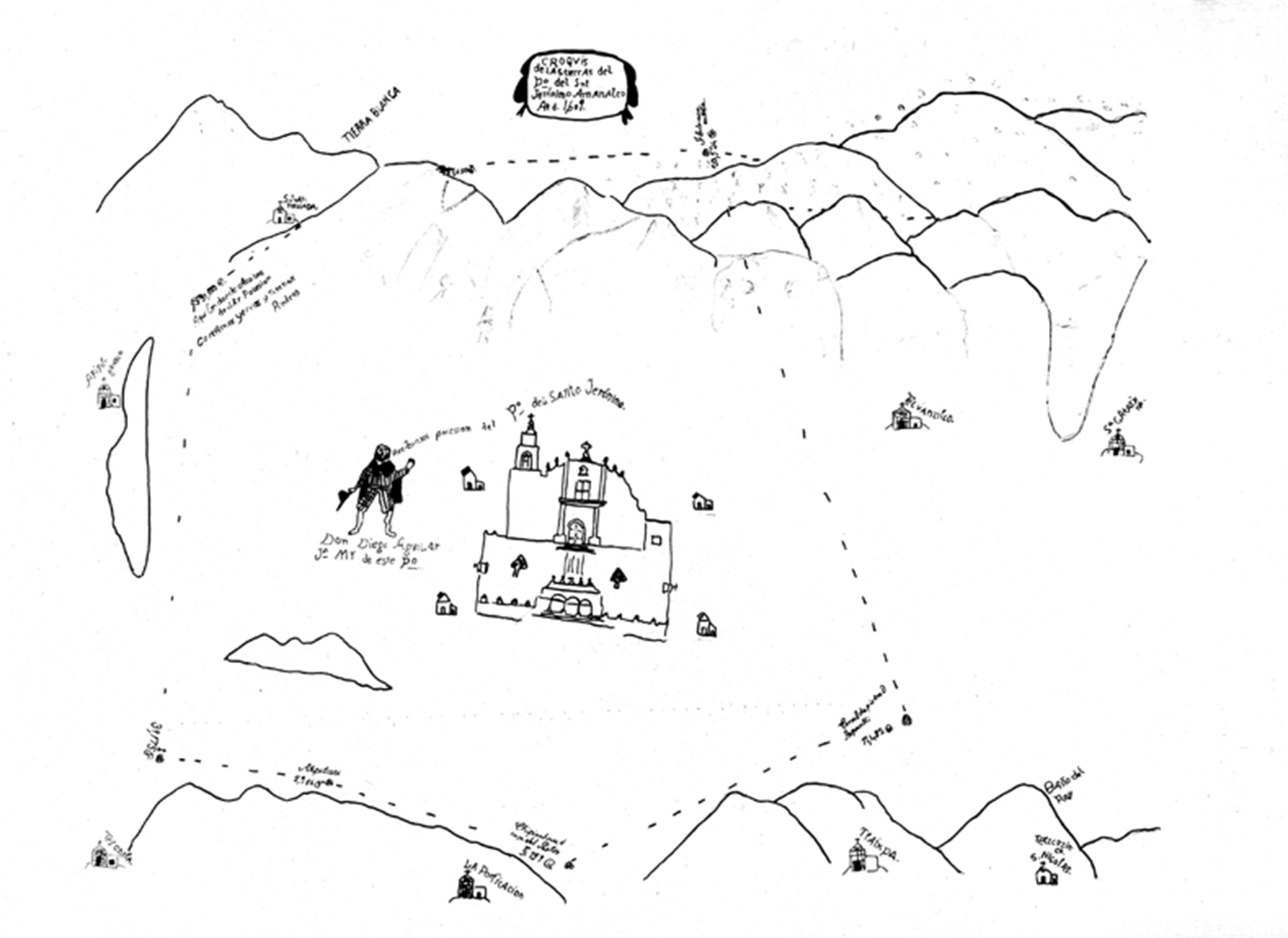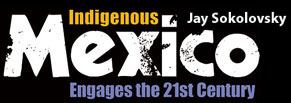Chapter 4. “Hey mister are you an anthropologist?” And other mysteries of fieldwork, culture and history.
Begins with field notes from 1972 and 2003 to show how important it is to place studies of culture in both historical and global context. Focuses on how anthropological ideas about rural peasant peoples has changed in the late 20th century and discusses the need for anthropological fieldwork to adapt to the changing realities of globalizing indigenous societies. Discusses and shows through video the need to shift thinking of anthropological subjects not as informants but “cultural interlocutors” who can help researchers understand their changing cultural scripts, spaces and ethnoscapes.
Video: The Fading Archaeological Heritage of Amanalco
Monday, October 14, 1972, 2:15PM: The day is sunny and very dry, upper 70s. I finally found the awful road into the center of the village from the main highway. I am driving on a rutted path of dirt, dust and boulders up to a foot in diameter and on the right is a dry irrigation canal. Close to the road I notice slight rises of 4 to 6 feet above the ground with the only serious vestiges of greenery, clinging to these elevations.
PowerPoint: The Fading Archaeological Heritage of Amanalco and a student question
Student question:
By the early 2000s all of these house mounds were plowed under for agricultural production. What might be the arguments for or against preservation of these lands as a heritage site versus their use as agricultural lands?
Added Value: Letter
I took particular interest in re-reading books by Robert Redfield and Oscar Lewis on Nahuatl-speaking Tepotzlan and a study by William Madsen on Milpa Alta in the highlands south of Mexico City (1960). Professor Madsen was gracious enough to reply to a letter I sent him before beginning my earliest work in Amanalco. I asked him to look at my research proposal and discuss the changes he had seen in Milpa Alta by 1972. In his letter he detailed many of the things I was to find in my own research and foreshadowed transformations I was to witness in the coming decades.
Added Value: Developing a Historical Basis for Understanding and An Unexpected Side Project
My Masters research, which examined the transformation of the governing civil-religious hierarchies of Mesoamerican peasant communities, led me to a focus on regional history during the first part of my early Ph.D. work. Before moving into Amanalco I lived in Mexico City where I examined documentary archives and talked with university professors and graduate students who had an interest in the area where I planned to work. This allowed me to develop a historical basis for understanding the paradox of Amanalco’s rapid change in the context of traditional culture.
Key archive materials related to the concerns of my initial research included agricultural censuses from the 1920 and 1930s.
I was also able to obtain as detailed compilations from the 1969/70 national census.
These resources allowed me to get an historical baseline for local population, indicating family structures, land holdings, occupations and a sense of how Amanalco contrasted with other rural pueblos in the region. For example, as noted in the power point just above, comparative data two years before I began my fieldwork showed that even for the largely indigenous sierra villages, Amanalco seemed least “developed.” It had the lowest levels of literacy and percentage of children attending primary school. The data also document the highest levels of agricultural occupation and percentage of houses with dirt floors. Yet, as explained in Chapter 3, with the assistance of the state political apparatus, by the early 1970s, Amanalco had already begun to make concrete steps toward modernizing their infrastructure. Also quite important was finding archived ecological data from the prior 60 years, concerning the production of irrigation springs which allowed people to feed themselves by farming in this high, rugged mountain zone. Connecting this data to my 1973 “on the ground” fieldwork which documented the use of environmental resources and family food production provided key clues to answering the paradoxical question I set out to explore related to the commingling of tradition and change. I provided the old irrigation data to the community and they have used this to back up their claims, that deforestation in the past two decades is likely connected to the dramatic decline of spring water feeding the irrigation system.Besides mapping the land and asking about the soils and different parts of the environment, I was able to participate in most agricultural activities and get a relatively accurate measure of the productive capacity of their agricultural work. Eventually, residents allowed me to do just about everything as part of the local reciprocal labor network used in farming, except for plowing, at which I was deemed hopeless. I was able however, with the help of government land and irrigation maps, aerial photos (Google Earth did not yet exist!) and my own environmental mapping and data on crops yields, to get an accurate picture of the productive capacity for growing key food staples (see PowerPoint below). Such data enabled me to plot out an accurate understanding of how lands were used and their connections to the kin grouping in the community.
Added Value: An Unexpected Side Project
Before moving into Amanalco I was graciously allowed to use the university’s field house in the town of Tepetloaxtoc as a base to conduct a side project for one of my professors and consolidate preparations for serious fieldwork in nearby Amanalco.
Codices
Unfortunately, virtually all of the original writings and iconographic documents of the Mexica and other indigenous states like the Acolhua of Texcoco were destroyed by the conquering Spanish and their priests within several decades of the conquest. In urban Texcoco, famed for its library, the royal archives went up in smoke. Even codices that were hidden to avoid this initial destruction were eventually put to fire in the 1530s as an inquisition by Bishop Zamarrago made it known that possession of such original documents was evidence of idolatry and sedition (Pomar 1941).
Web Link: Codex Mendoza and Women’s work in 1973 in Amanalco
One such mid-16th century resource is the Codex Mendoza . It includes detailed drawings of daily life in the general region where the village is situated. The codex illustrates such things as color renditions of women making tortillas and the production and weaving of a fiber called ixtle extracted from the leaves of the maguey cactus (the century plant) and used for the fabric which clothed commoners. These are activities I observed on a daily basis in 1973 in Amanalco.
PowerPoint: Ethnohistory in Action: Key Resources
PowerPoint: 1972-3 The Production of Ixtle Fiber
In my first month living in Buena Vista I noticed Doña Concha was beginning to spin some ixtle fiber when the clay spindle whorl she had bought in Texcoco broke. The next day I saw her working on the project with another spindle which looked very old; it turned out that early that morning she had taken a hike to the archaeological zone where her ancestors once lived and found one which was perfectly serviceable.
Added Value: 1609 Colonial Map

1609 Colonial map showing the founding of Amanalco’s church and delineating the boundaries of it’s territory. Source: Mexico D. F., ATN, “Amanalco,” 1912:1. Click on map to enlarge
PowerPoint: Harvesting Wheat to Get Some Interview Time
While in this chapter’s opening vignette the delegado and other men joked about needing me to In certain cases I would make a balanced reciprocal exchange of, say two hours of harvesting wheat for 1-2 hours of interviewing time after the work.
Video: Hand Kiss Respect
Over the mid-1990s the actual performance of this respect greeting, especially between youth and their parents and grandparents, has changed in a way which reflects powerful social changes such as a sense of greater equality between generations. By then teens often greeted elders with the addition of a gentle kiss and more open display of affection in public.
Video: Interview on Old Age
One of the things I learned pretty quickly in going from connecting field notes and headnotes to grounded knowledge was to use information from varied people or even the knowledge of children, who often had fewer filters on the information they were giving. Children, especially females, were especially helpful in ferreting out accurate information about kinship data. Listen carefully to my interview in 2003 about household composition and aging with an elderly neighbor, who is minding a great-granddaughter while her husband irrigates their corn field.
An interview about old age. Control/click on image to see the video© Jay Sokolovsky
Video: Colonial Church’s Historically Important 19th Century Organ
By 2010, with the steady drop in the cost of equipment and ease of simple editing on computers, a local mini-industry in Amanalco had emerged for doing videography and photography of life cycle rituals. Now virtually all such events require a “compadre de video,” who pays someone to take video and produce a DVD. Some of these enterprising individuals are involved with the group Ollin Amanalco Pilhuame, mentioned in Chapter 1, and have begun to post video of not only fiestas but also the restoration of the colonial church’s historically important 19th century organ.
Video: Father talks with son about not working in field
Video: Talk with Mayordomos
In certain situations I show my fieldwork videos in group settings so people can collectively comment and I can get varied feedback from questions. In 2010 I am presented my edited video on the fiesta for Amanalco’s patron saint to the local priest and the ritual stewards from the community who were to be responsible for that year’s celebrations
Student Question:
Think about the context of this brief video. in this case might there be advantages to using this approach just with the community members without the priest who came from another part of Mexico?
Visual Documentation
Since the 1970s with the pathbreaking Through Navaho Eyes: An Exploration in Film Communication and Anthropology (1972) there have been a variety of efforts to place film, video and audio resources into the hands of indigenous peoples. Among the most ambitious such programs is the Chiapas Media Project ( www.chiapasmediaproject.org) which since 1998 began to provide video cameras, computer equipment and working knowledge to indigenous and campesino peoples among autonomous Maya Zapatista villages and communities in Guerrero, Mexico.
Good print resources on this topic are:Erica Worthham, 2013. Indigenous Media in Mexico: Culture, Community and the State. Durham, NC: Duke University Press.Pamela Wilson and Michelle Stewart, eds. 2008. The State and Global Indigenous Media: Cultures, Poetics, and Politics, Durham, NC: Duke University Press.
